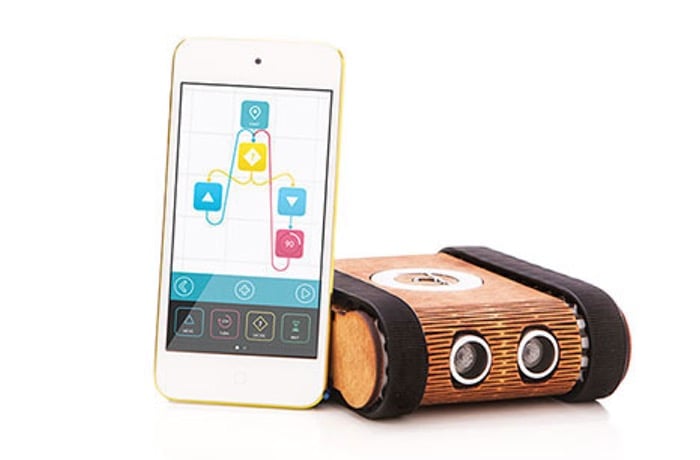After teaching at orphanages in India, two brothers, Rohit and Sidharth Srinivasan, noticed that the lack of educational resources available prevented children from learning the latest skills in technology.
latest skills in technology.
Their solution? Trashbots, a company that takes an innovative approach to providing low-cost, effective tools to teach 21st-century computer science, robotics, math, and science to underprivileged children.
The Srinivasans designed Trashbots to work with open-source platforms, thus making the kits accessible to kids in rural and remote areas. Another advantage of the Trashbots platform is the scalability for children of all ages; kindergarteners can learn the basics of building without electronics, or older children can begin coding with “block programming” (synced with the Trashbots app) to program the robot to do anything (like dancing to music!)
A typical kit includes gears, pucks, axels, and starting “trash” (often rubber bands and popsicle sticks) as well as the Trashbots engine and USB cable. From there, Trashbots encourages young inventors to use anything from their local environment to add to the robot.
What further differentiates Trashbots’ kits is their ability to meet the needs of school districts, particularly during the COVID-19 pandemic. During the pandemic, Trashbots began working with school districts to ship the kits directly to students’ homes.
The Srinivasans are revolutionizing the world of STEM, making coding and engineering available to children of all ages, regardless of background. With each kit, Trashbots takes one man’s trash and makes it another child’s treasure.









 Have you ever thought about what happens to that bar of soap you open at a hotel for your night’s stay? Shorter visits may only require you using less than a quarter of the bar, and before David Bishop thought about this conundrum the soap would be tossed out with the trash when housekeeping came around. The estimated one million bars of soap from hotels thrown away each day in the United States then become chemical waste in landfills. Bishop recognized this problem and connected it with another – child mortality rates.
Have you ever thought about what happens to that bar of soap you open at a hotel for your night’s stay? Shorter visits may only require you using less than a quarter of the bar, and before David Bishop thought about this conundrum the soap would be tossed out with the trash when housekeeping came around. The estimated one million bars of soap from hotels thrown away each day in the United States then become chemical waste in landfills. Bishop recognized this problem and connected it with another – child mortality rates.